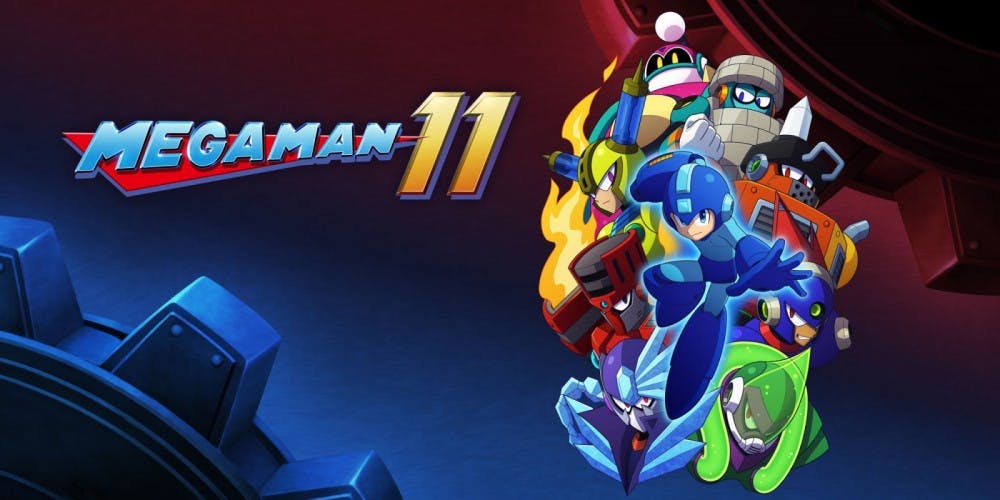Disclaimer: This review is of the PC version and was conducted on a PC with an Nvidia GeForce GTX 960, i7, 8GBs of RAM.
For a franchise as legendary as Mega Man, it still remains a shock that the series was dormant for so long. Capcom famously attempted to destroy the franchise during the dark ages of the company, cancelling game after game after game at varying stages of development. The cancellation of Mega Man Legends 3 remains the most heart-breaking, considering the game had a fully fleshed out demo before getting iced by corporate. The rise of Kickstarter didn’t do the Blue Bomber any more favors, as his bootleg brother Beck ended up in one of the highest profile disasters of 2016, Mighty No. 9. Even with an appearance in Smash 4, it seemed the character would simply fade to dust and nostalgic merchandise.
Then, out of nowhere following successful releases of the Mega Man Legacy Collections, Capcom drops their announcement of Mega Man 11, a modern revival of the classic series. With a promising demo and only good news coming out of development, it is my pleasure to say that Mega Man 11 is a fantastic return to form for a once-dead legend.
A tune-up to presentation leaves a couple screws loose
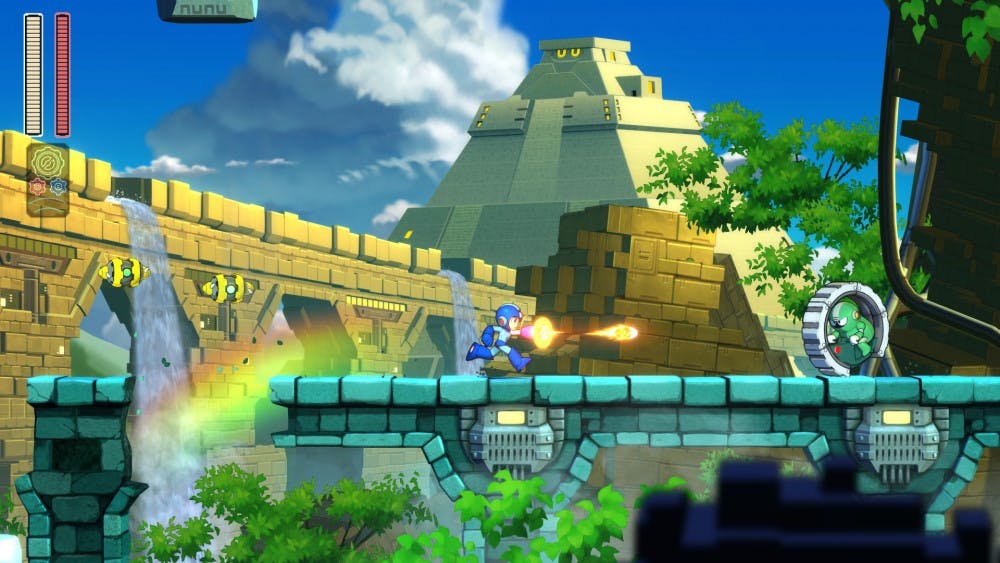
Image from Steam
Mega Man 11 is everything a fan has been hoping to get for years now. While Mega Man 9 and 10 are both great games, they always just seemed to lean too heavy on nostalgia with the 8-bit art style rather than letting the series finally evolve to the modern age. Mega Man 11 doesn’t deliver cutting edge graphics or anything, but it manages to clearly recreate that classic look with a brand new coat of paint. The character and enemy designs are all classicaly inspired, but distinct and memorable. It’s like if they made 3D models directly from the 2D artwork, and it all looks great in motion. The Robot Masters in particular all look great, even if Blast Man is possibly a knock-off of Bakugo from My Hero Academia. The stages also all look wonderful, with some aspects looking hand-drawn and blending in beautifully with the detailed 3D designs. A personal favorite of mine is Bounce Man’s stage, with all of its bright colors and lovely looking balloons. They took the one great aspect of Mega Man 8, the stunning artwork, and gave it new life.
So, visually the game is a stunner, but what about musically? The Mega Man franchise is famous for its incredible soundtracks full of upbeat and hype tunes that drive the player through the sometimes insanely hard levels. Unfortunately, this is one aspect of Mega Man 11 that is a bit of a miss for me. The soundtrack is overall good, but that’s just because its great at parts and not-so-great at other parts. For instance, I love the music in Blast Man’s stage, but Torch Man’s stage has music that made playing through the level three times as difficult. The sound design is also hit-and-miss, with the new weapons all having satisfying sound effects, but iconic sounds like the charging of the Mega Buster and picking up an E-Tank are noticeably absent. The voice acting, at least, is pretty good, especially when you consider the series’s past relationship with… below average voice acting.
Get-equipped with a classic Mega Man experience
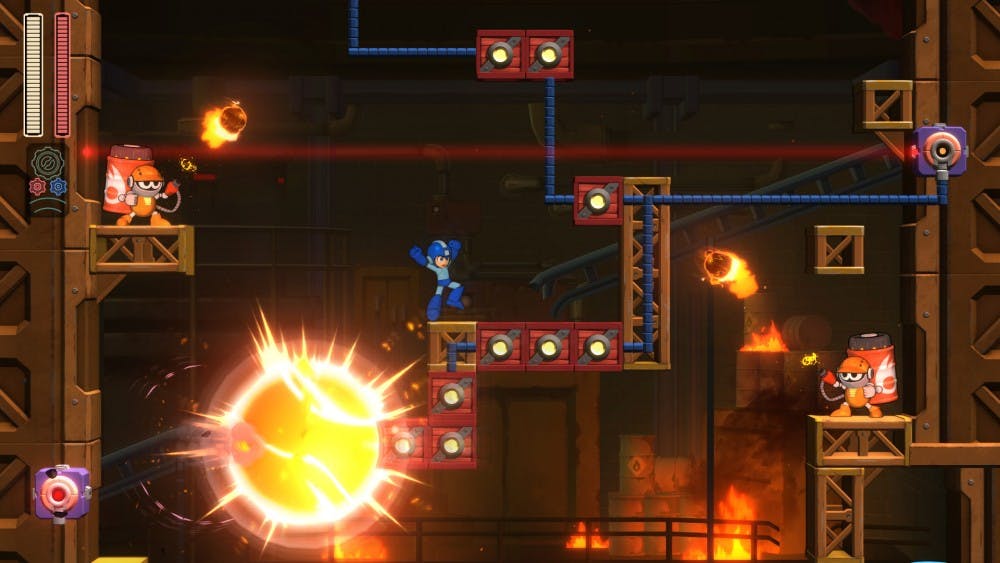
Image from Steam
So it looks like Mega Man, sounds (mostly) like Mega Man, but the real question is this: does it PLAY like Mega Man? The answer is a massive glowing neon YES! This game plays exactly like you expect it to play. Mega Man runs, jumps, shoots, slides, flies, and dies in spike pits just like the classics. Add in a few quality of life changes to how movement works with sliding getting a slight redesign, the Rush Coil and Jet always being available at the press of a button, and the quick weapon swap being mapped to the right analog stick and you have one of the best feeling platformers in a year of fantastic platformers. It may not change much up in how it plays, but considering the pain fans went through with Mighty No. 9, it’s like laying in your bed at home after sleeping in hotel beds of various qualities for years.
Yet, the series still needs a bit of innovation to stay fresh and Capcom delivers the goods with a mechanic that quickly integrates into Mega Man’s arsenal. The tool added the Mega’s utility belt is the Gear Shift mechanic. This new trick allows the player to switch on the fly between the Speed Gear, which slows down the level and any hazards it may contain, and the Power Gear, which enhances Mega Man’s attacks similarly to how the upgraded Mega Busters in Mega Man X would. At first, being a veteran of the series it felt weird to use the gear changes, but by the Wily stages at the end of the game it came as easily as any other tool making the flow of stages even better. It always felt satisfying to see dangerous looking obstacles being made child’s play by the speed gear, especially in some of the more difficult stages.
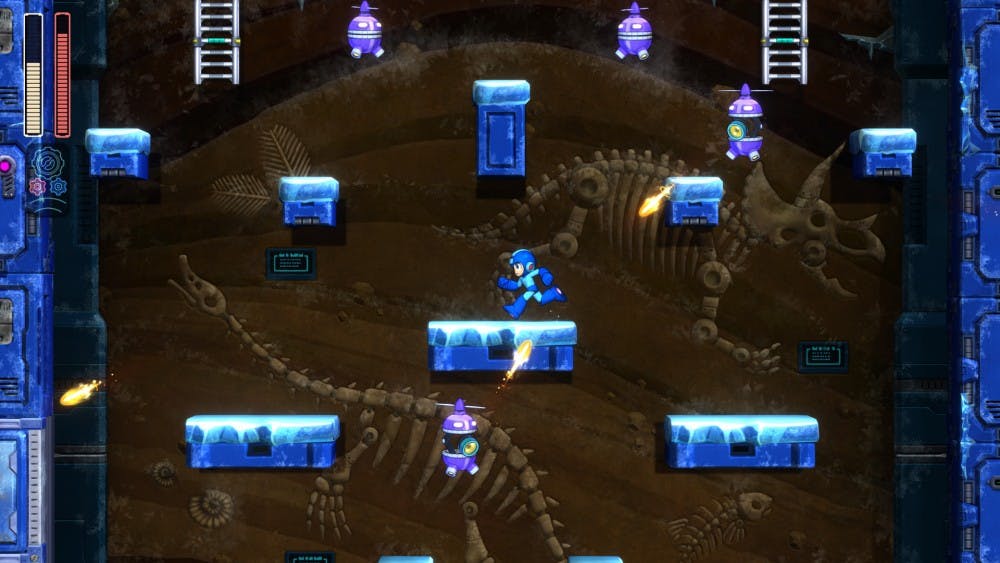
Image from Steam
Speaking of which the level design in this game is on point. Each stage is longer than your traditional Mega Man level, turning stages into more of an endurance run than previous games. While some might find issue in this I appreciate the longer levels a lot. The developers get to experiment with a whole range of stage hazards and gimmicks, sometimes all within a single level. Another great thing is the lack of RNG within level design. If someone were to execute a stage perfectly consistently they would likely get the exact same time in every single run. It comes down to pure skill whether or not the player can conquer a level, which is a delight to see. My only complaint is that some longer levels could use a definitive continue point, a mechanic from Mega Man 8 that I would have highly appreciated here.
A Yellow Devil of a game
In terms of difficulty, don’t be concerned Mega Man fans, this game has teeth. The normal difficulty for the game, said to be designed for veterans of the series, is perfectly tuned to bring back the highs and lows of the classic series. Some stages and Robot Masters are a breeze, Tundra Man’s in particular being a gentle day out ice-skating when compared to the spikey-watery Hell that is Acid Man’s stage. The Wily stages also provide an appropriate challenge, including a Yellow Devil that may be one of the toughest Devils in the series’s history. The player is expected to use every weapon at their disposal to get through the stages, but there’s always something satisfying to just running-and-gunning your way through using only the trusty Mega Buster and few extra lives.
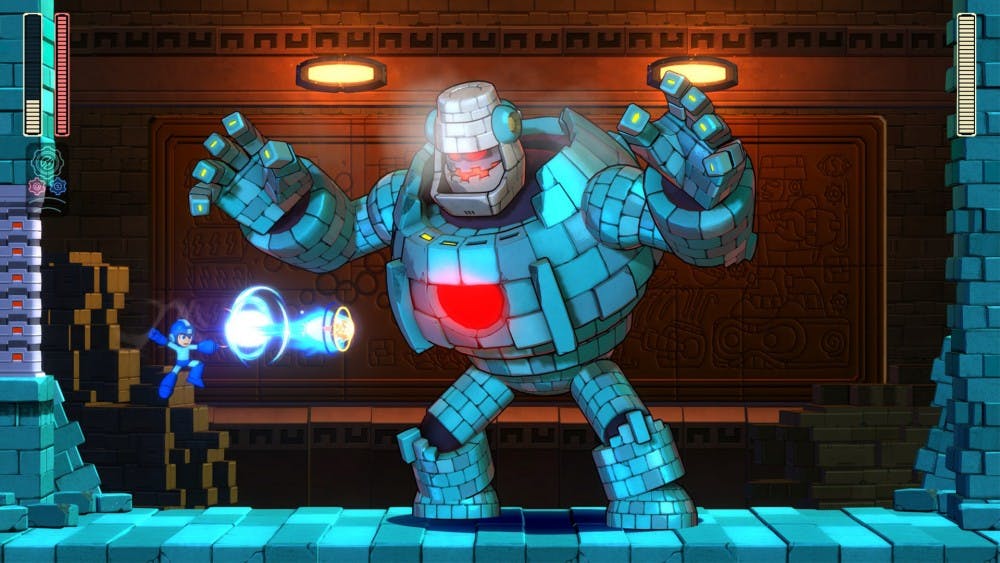
Image from Steam
The only aspect that I would say makes the game easier is the return of the shop mechanic. In previous titles with the shop, bolts were infrequent enough that purchases had to be made intelligently. In Mega Man 11, however, the shop can be a bit of a crutch to get through tougher stages. The upgrades are fantastic additions and make the game even more enjoyable, particularly the upgrade to the speed gear, but the ability to buy extra lives on the cheap may be a little too tempting for the weak-willed. This includes me, of course, I abused the heck out of the easy extra lives. To the game’s credit, a lot of stages still managed to devour them faster than I could load my saved data to try again. It’s tough, but it’s fun in a way that only Mega Man can capture.
And for those who want to get into the series but don’t want to get pounded into the dust by the Yellow Devil so quickly, easier difficulties are added for people of various skill levels. I haven’t tried them out myself, but I’m sure they are a lovely addition for those looking for it.
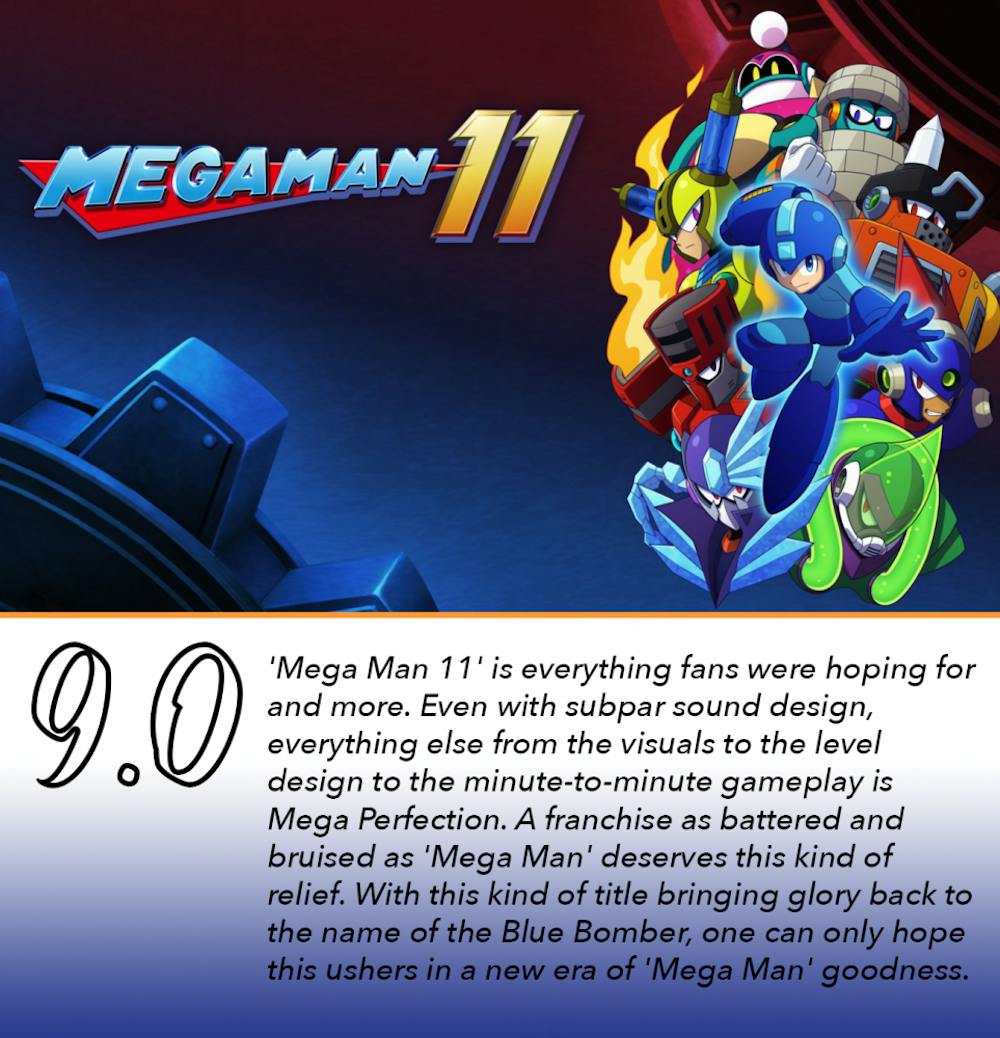
Images: Steam
Featured Image: Nintendo
For more entertainment related content, visit us at Bytebsu!















